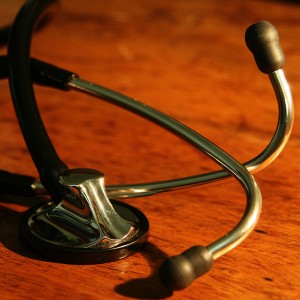Four years ago, the City of San Francisco launched an ambitious attempt at health care coverage for all. Today, the San Francisco Public Press devotes its winter edition to an analysis of how well "Healthy San Francisco" is working. While tens of thousands of previously uninsured people have enrolled, and now have health care access they did not have before, the costs have been daunting.
In the Public Press report Stephen Shortell, Dean of the UC-Berkeley School of Public Health appropriately summarized the problem, "Healthy San Francisco is a model for health care delivery, but not for payment."
Healthy SF is not insurance. Instead, it is access to community clinics and other safety net providers, but only those in San Francisco. Participants are not covered if they visit providers outside San Francisco. It is largely uninsured adults, people who earn too much money to qualify for Medi-Cal, who have signed up. In a state where more than 20 percent of people lack health insurance, only three percent of San Franciscans now are without health care. The Public Press reports that many people who had not seen a doctor in years are now receiving treatment.
But, in its detailed report, the Public Press gets at the strains on community clinics.
Participating nonprofit community clinics in the network have been shouldering part of the financial burden. That may be a problem in an economy where health care costs are rising twice as fast as inflation. Some clinics say they are tapped out, and the $114 per-patient per-year reimbursement they get from Healthy San Francisco doesn’t come anywhere close to covering costs.
“The program is very, very important,” said Karen Hill, administrative director of Glide Health Services, a large, busy nonprofit community health clinic in the Tenderloin whose base of 3,000 patients includes 1,500 Healthy San Francisco members. “But I think we should recognize that it does not pay for the care of the population.”
At last count, Healthy San Francisco covers 54,348 patients, about two-thirds of the estimated 82,000 San Francisco adults who lack insurance, according to a September report from Mathematica Policy Research of Princeton, New Jersey. (Estimates range widely from 64,000 to 90,000 uninsured adults aged 18 to 64.)
In a survey of patient satisfaction, 94 percent said they were satisfied with the medical care they received through the program.
But clinic directors say that while the program has been great for patients, the clinics themselves struggle to deliver care to ever-growing numbers of people. Some clinics have seen their patient base grow by a third since 2007.
Healthy San Francisco has laudable goals, said Ricardo Alvarez, medical director of the Mission Neighborhood Health Center, and “has expanded care to a vulnerable underserved population.”
But for clinics to make it work, Alvarez said, “it is challenging financially.”
Several clinics, such as Lyon-Martin Health Services in Hayes Valley, have stopped taking more Healthy San Francisco patients. The center was already under financial stress this year, and announced earlier this year it had been on the brink of bankruptcy.
Public Press details the different funding streams and explains the budgetary shortfalls. But it also points to potential savings.
Shifting to the patient-centered model has also dramatically cut the use of city emergency rooms for routine care by the program’s participants. Proponents say that in the long run emergency room “diversion” — catching illness before it becomes acute — has the potential to save the city millions of dollars a year because emergency care is inevitably more expensive.
Public Press doesn't address how great those potential savings could be, but it seems unlikely that ER diversions would save enough to offset the cost of covering tens of thousands of people in community clinics.
